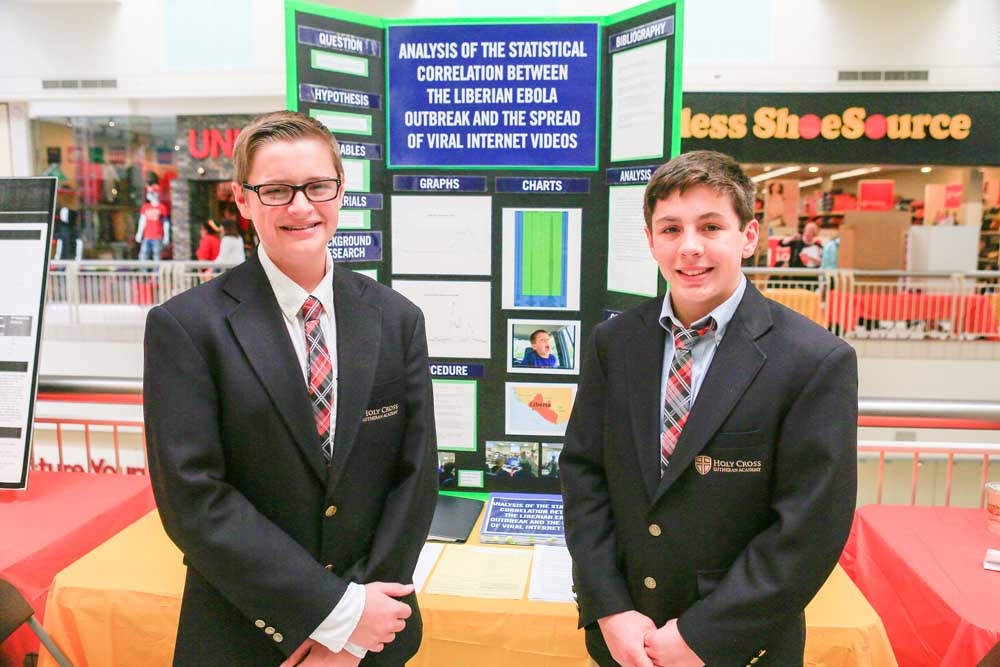Teens compare viral video data to Ebola outbreak
Published 12:00 am Saturday, February 20, 2016

- Joshua C. Cruey / Orlando Sentinel / Tribune news ServiceDavid DeVore, the young star of the YouTube viral video “David After Dentist” and his project partner Wesley Harcus, left, studied the correlation between his viral video and the recent outbreak of Ebola for a science fair.
SANFORD, Fla. -—Dressed in a dark suit jacket, light blue button-down shirt and a plaid tie, 15-year-old YouTube sensation David DeVore points to a line graph showing data from his viral video “David After Dentist” at a Seminole County science fair last week.
David’s dad posted the video of his then 7-year-old son to YouTube in 2009 after he got a tooth removed. Under heavy medication from the surgery, David makes comments like “Is this real life?” and “I can’t see anything” in the hysterical video which has garnered more than 132 million views.
Trending
Years later, David is still living out his YouTube fame.
David’s best friend and project partner, Wesley Harcus, 15, said he didn’t know David was “famous” until months after becoming friends.
In recent months, the two friends started comparing David’s viral video views to the rate at which the Liberian Ebola outbreak spread. Their project, presented on a trifold cardboard poster board outlined in neon green, displayed two line graphs to show how the video data is similar to the spread of the virus.
David said the first line graph shows the daily video views during a span of 50 days after it was posted. The other graph shows the number of Ebola outbreaks from January 2014 to August 2015. Both data sets were displayed on line graphs to compare, and they discovered a similar peak in the numbers but concluded additional tests would need to be done to see the true pattern.
“We would test more viruses before we test more videos, I would think,” David said. “I think it would be better to test our video with more viruses and then maybe test that one virus with more videos.”
David said the results, with further tests, could be used by scientists when they are trying to contain the spread of a virus. If scientists know how fast a virus is likely to spread, they can better prepare to protect people from it.
Trending
The University of Georgia asked for the viral video data for a research project involving the Ebola outbreak, which inspired David’s project. In exchange for the data, DeVore asked for the Ebola outbreak data and a campus tour for David and Wesley. David, who wants to study engineering, even had the opportunity to sit in on a class during the visit in November.








